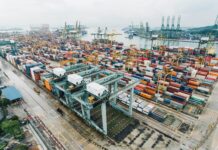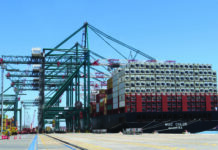
The Danish maritime data analysis company Sea-Intelligence has used data from its Blank Sailings Tracker to monitor any potential recent changes in the blank sailings patterns of the carriers on Transpacific and Asia-Europe.
Starting from the first week of 2022, Sea-Intelligence has calculated the number of planned blank sailings in the coming eight weeks.
In the subsequent week, the analysts have calculated the number of planned blank sailings in the same eight-week period, which then allows the calculation of the change from the first to the second week.
“The result of this is very volatile, as vessels can slide back and forth between weeks,” commented the analysts, who, for this reason, took a two-week rolling average.
In the following figure, we can see that there is an increasing trend on Asia-North Europe, indicating that carriers are increasing their blanking activity on the trade lane.

“While the number itself appears relatively low, we need to keep in mind that the baseline number of regularly scheduled services per week is currently 19,” noted Alan Murphy, CEO of Sea-Intelligence.
He went on to add, “When we perform the same analysis on Asia-Mediterranean, we see quite the opposite. There was an increasing trend in March 2022, which reversed in the following weeks, and now there is a behaviour towards no additional blanking activity.”
Murphy concluded that “this is perhaps a reason why the rate levels have held up more firmly on Asia-Mediterranean than on Asia-North Europe.”
On Asia-North America West Coast, there is a spike in the early part of the year due to Chinese New Year, but in recent weeks, changes made by the carriers on a weekly basis have remained rather stable.
“We see a similar case on Asia-North America East Coast, with the only difference that the spike came a little later than on Asia-North America West Coast,” commented Murphy, who added, “Given what we see on Asia-North Europe, it is perhaps indicative of carriers’ concerns about vessel utilization on that trade lane.”





